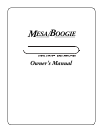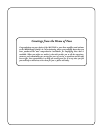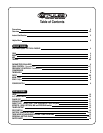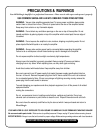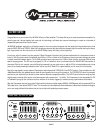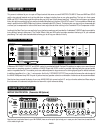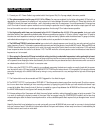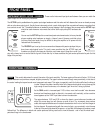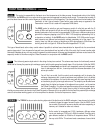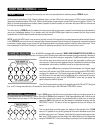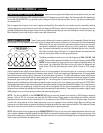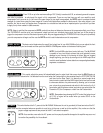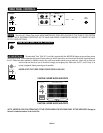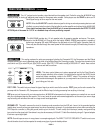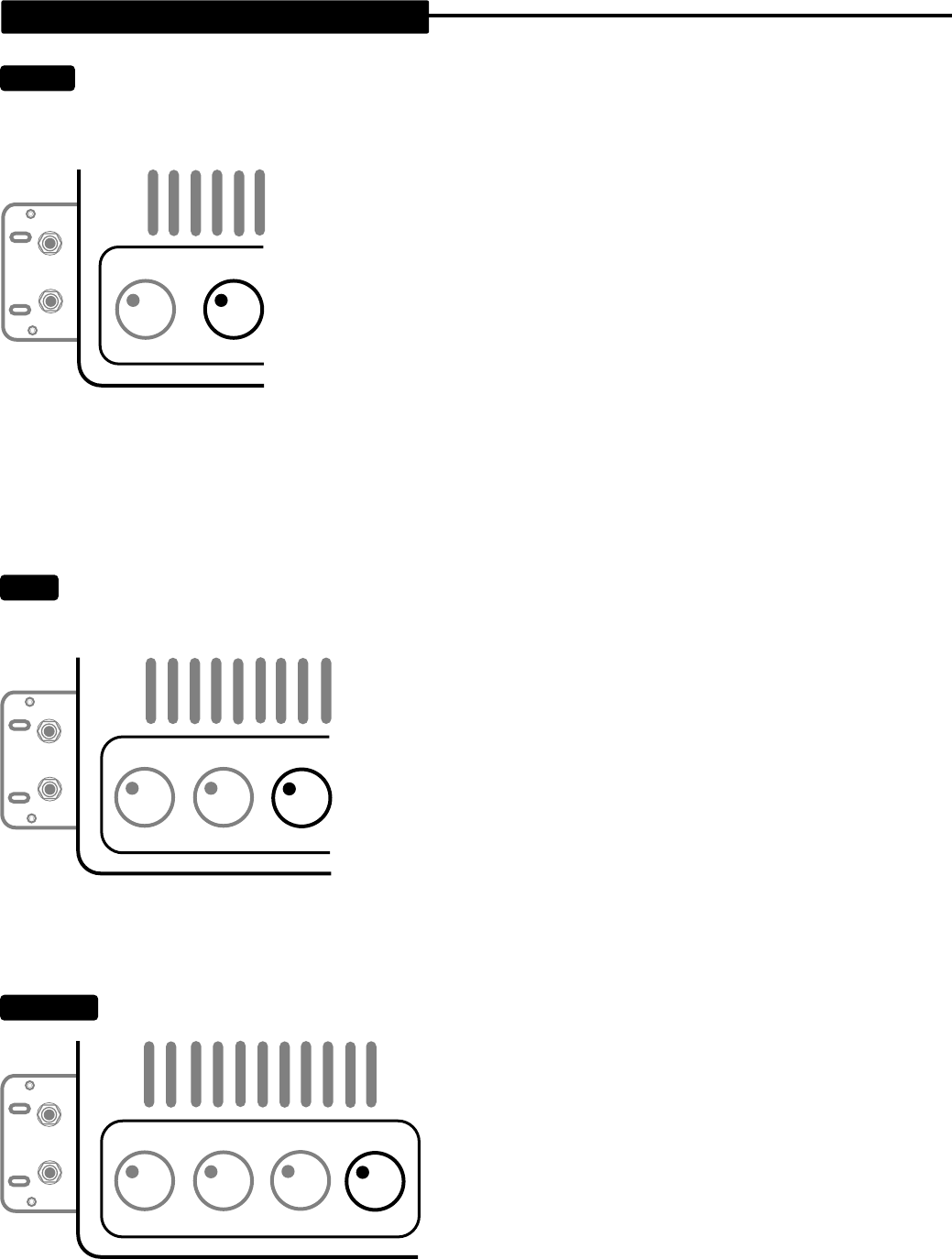
FRONT PANEL CONTROLS: (Continued)
BASS:
This control is responsible for the basic mix of low frequencies in the tube pre-amp. As mentioned earlier in the Helpful
Hints section, the BASS control is an active shelving type control as opposed to a passive style control. This means that a center Q
point has been chosen and this control allows you to either boost or cut that frequency. This control differs from the low bands of the
Parametric in that it has a broader Q point with a more gentle ramp as opposed to the
Parametrics’ narrow Q that is used with a separate GAIN control.
The BASS control is actually a gain and frequency control all rolled into one with the Q
center at 55Hz and harmonics in both low and high directions are affected because of its
broader band nature. As the control is increased past 12:00 there is a 6db per octave rise in
gain with the frequency topping out at 321Hz. With 12:00 straight-up representing “flat” (a
no boost/no cut setting). As the BASS control is dialed below 12:00, 55Hz and all associ-
ated harmonics are reduced and eventually notched completely out of the signal. Con-
versely, there is a 6db per octave cut beginning at 55Hz going down to 20Hz where the
shelving ends with a
cut gain
of -20db as the control approaches 7:30 (off).
This type of broad band, active rotary control makes it possible to achieve bass characteristics far beyond that of a conventional
passive type control. It can increase the low end to an almost absurd level and with a flick of the wrist, dip it to near transitor radio
skinniness. Needless to say, with any control this powerful a certain amount of finesse must be applied to achieve musical results. Be
especially mindful of this when using the 5 Band Parametric in conjunction with the BASS control.
MID:
This is the only passive style control in the string of rotary tone controls. This scheme was chosen for its inherently musical
blend and for the way the passive style midrange control, with its wide spread and smooth taper,
fills in the holes
. Unlike the BASS,
this control is a
boost only,
and while it can competently remove this broad spec-
trum of midrange from the mix, it cannot provide the extreme attenuation of an
active style control.
You will find, as we did, that this control works amazingly well for shaping the
midrange frequencies with a natural earthiness and character that is a perfect
counterpart to its neighbors. It is hard to dial wrong with this more forgiving control
as it seems to give you just enough and no more. This simplicity can be a welcome
respite from the higher tech power of the adjacent tone controls...not to mention
the 5 Band Parametric. For radical and specific scooping of the midrange frequen-
cies for modern R&B and Funk styles, there is plenty of notching power that is
infinitely more accurate to be found in the 5 Band Parametric. Because of this, we opted for the tried and true passive style midrange
control that has been working great in all of our amplifiers for decades. It’s hard to improve on a classic.
TREBLE:
The TREBLE is also an active shelving style control like that found in the BASS and again, it was chosen for its ability
to radically shape the upper harmonic region. Like the BASS, it also
has a center Q point with harmonics above and below responding in
harmony as it is dialed for either cut or boost.
As the control is increased past 12:00, it produces a 6db per octave
rise in gain starting at 723Hz until +20db is reached. From this point,
gain remains constant at +20db for all frequencies above 723Hz all
the way out to 20Khz. This scheme lends a sweetness of sound while
PAGE 5
INSTRUMENT
INPUTS
PASSIVE
ACTIVE
GAIN BASS
FOUR - STAGE VACUMM
INSTRUMENT
INPUTS
PASSIVE
ACTIVE
GAIN BASS MID TREBLE
FOUR - STAGE VACUMM TUBE PRE - AMPLIFIER
INSTRUMENT
INPUTS
PASSIVE
ACTIVE
GAIN BASS MID
FOUR - STAGE VACUMM TUBE PRE



